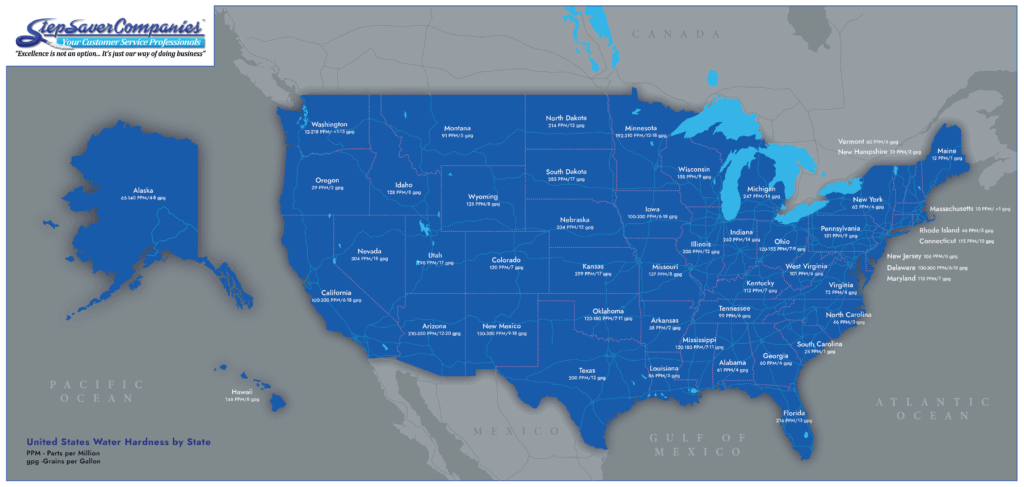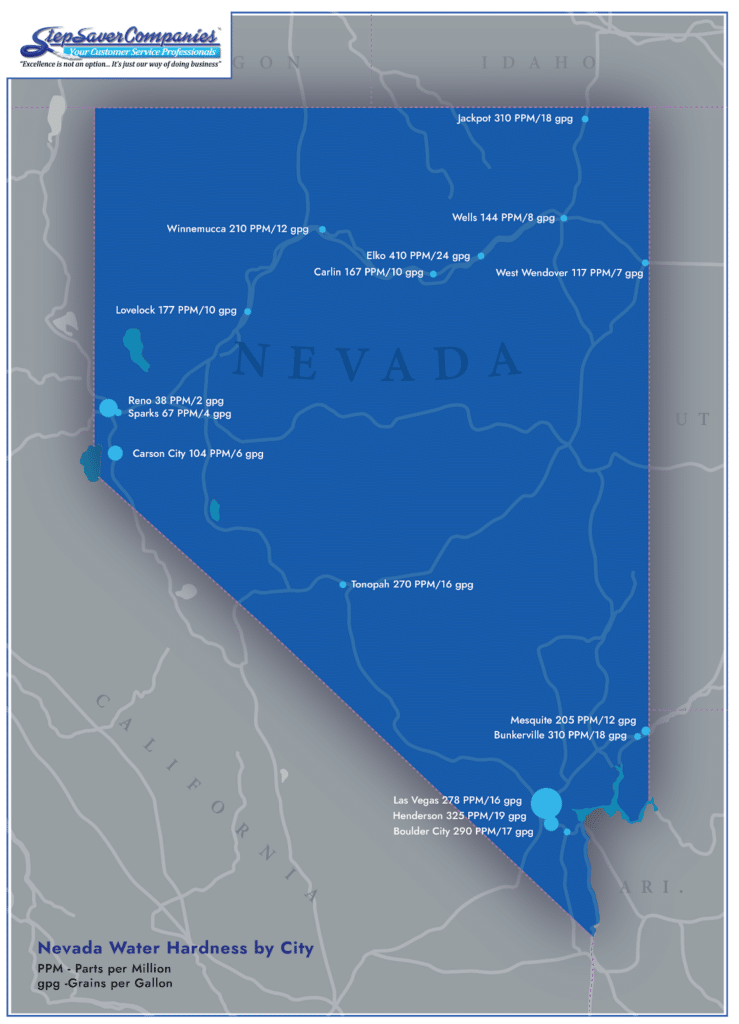Providing clean and safe drinking water in the workplace isn’t just a courtesy—it’s a legal requirement. OSHA mandates that employers supply employees with potable water, ensuring health and safety in the workplace. However, while these guidelines establish the necessity for clean water, they don’t specify how to achieve it.
That’s where office water filtration systems come in. From improving water quality to supporting efficient office operations, choosing the right system is essential for meeting OSHA standards and promoting employee satisfaction. In this blog, we’ll explore OSHA’s water-related regulations and highlight the top 4 filtration systems your office can consider, from reverse osmosis systems to water softeners. Keep reading to make an informed choice to ensure your office water is safe, clean, and efficiently filtered.
OSHA’s Requirements for Water in the Workplace
The Occupational Safety and Health Administration (OSHA) has outlined clear standards and guidelines for drinking water that employers must abide by. This is especially important for office spaces, whether you have drinking fountains or provide bottled water stations. According to OSHA, employers are required to:
- Provide potable drinking water that’s safe for consumption in adequate amounts to meet employees’ health and personal needs.
- Dispense drinking water from a fountain or covered container with single-use drinking cups stored in a sanitary place or single-use bottles.
- Don’t allow employees to share drinking cups or water bottles.
While the OSHA clearly states that office spaces and other workplaces must provide purified drinking water for employees, the organization does not prescribe the methods for achieving this. According to the Safe Drinking Water Act (SDWA), workplace water systems must meet specific contaminant limits, monitor their water regularly, and provide public information about the quality of their drinking water. The Environmental Protection Agency (EPA) sets and enforces these standards, which regulate acceptable contaminant levels, including bacteria and chemicals like arsenic. Office water systems must routinely test for contaminants and report findings to the EPA and state agencies.
Since OSHA doesn’t specify filtration methods, it’s up to you to identify the best water filtration system for your office to ensure it’s safe and free of harmful contaminants.
4 Best Water Filtration Systems for Office Settings
Improve your employees’ experience and follow OSHA guidelines with safe, purified drinking water in your office. Here are 4 different filtration systems to choose from for your office:
1. Reverse Osmosis
Reverse osmosis systems are among the most effective for purifying water. They remove up to 99% of contaminants, including heavy metals, chemicals, and bacteria. Here’s how a reverse osmosis (RO) filtration system works:
- Water enters the RO system and goes through a process called prefiltration. Prefiltration often includes a carbon and sediment filter that removes sediment and chlorine that could clog or damage the RO membrane.
- Next, the water passes through the reverse osmosis membrane, the system’s main component. In the membrane, dissolved particles that are too small to be seen with an electron microscope are removed from the water.
- After this filtration process, the water flows to the storage tank, which stays until needed. A reverse osmosis system consistently filters water until the tank is full and then shuts off.
- When you turn on your drinking water faucet, purified water will come out of the storage tank through an additional postfilter to polish drinking water even more before it reaches your faucet.
Reverse osmosis systems remove salt, sediment, chlorine, microplastics, heavy metals, and other contaminants from your water. These filtration systems not only remove harmful chemicals from your drinking water and make the water taste better for employees or customers. Additionally, you’ll save money since you won’t have to buy bottled water. RO systems can produce clean, safe drinking water for a small price by the gallon.
2. Water Softener
Water softeners are also great filtration system options for offices. These water treatment processes are designed to address hard water issues by removing minerals like calcium and magnesium, which cause scale buildup in plumbing, appliances, and fixtures. Here’s how a water softener system works:
- Water enters the softener system and flows through a tank filled with resin beads, which are charged with sodium or potassium ions. When hard water passes through the resin, the calcium and magnesium ions are exchanged for sodium or potassium ions, effectively softening the water.
- The now-softened water exits the system and is distributed throughout your office’s plumbing. Over time, the resin beads in the system become saturated with calcium and magnesium and must be regenerated.
- The regeneration process involves flushing the resin beads with a brine solution (a mixture of water and salt). This solution washes the calcium and magnesium ions away, recharging the resin beads to continue softening the water.
Hard water is generally not safe to drink. With excess amounts of minerals like calcium and magnesium, hard water can not only be a risk for your employees’ health but also doesn’t taste very good. Water softener systems improve the quality of your water by removing hard minerals, which enhances the taste and purity of your drinking water and ensures the efficient operation of various equipment. Water softeners reduce maintenance needs, extend equipment lifespan, and improve energy efficiency by preventing scale buildup in office appliances such as coffee makers and water heaters.
3. Carbon-Based Filtration System
Another filtration system to consider for your office is a carbon-based water treatment process. Carbon-based filtration systems are highly effective for improving the taste and smell of water while removing common contaminants such as chlorine, volatile organic compounds (VOCs), and sediment. These systems are ideal for offices looking for a straightforward way to enhance water quality without requiring extensive equipment and ongoing maintenance.
Here’s how a carbon-based filtration system works:
- Water enters the system and flows through an activated carbon filter, which uses a porous surface to trap impurities. The carbon material is highly absorbent, attracting and capturing chlorine, pesticides, herbicides, and other chemical compounds that can affect the taste and safety of water.
- In some systems, water passes through multiple stages of filtration, including additional sediment filters to remove larger particles and polish the water.
- Once filtered, the water is clean, crisp, and ready for use. These systems are easily integrated into office settings, often connecting directly to existing water lines or installed under sinks.
Carbon-based filters are a simple yet effective way to ensure high-quality drinking water for your office. By eliminating chlorine and VOCs, these filtration systems deliver water that tastes and smells better, resulting in a positive experience for employees and customers. Carbon filters are affordable and easy to maintain on your own and reduce the use of plastic in your office. If you’re looking for an easy, environmentally friendly option, carbon-based water filters are solid.
4. UV Water Purifiers
UV water purifiers are an innovative and effective solution for eliminating harmful microorganisms from your water supply. Using ultraviolet light, these systems destroy bacteria, viruses, and other pathogens, providing clean, safe drinking water without the use of chemicals.
In a UV water purification system, water flows through the main chamber and is exposed to high-intensity ultraviolet light. This light disrupts the DNA of microorganisms, rendering them inactive and preventing them from reproducing. Unlike other filtration systems, a UV purifier focuses exclusively on biological contaminants, which makes them ideal for those addressing microbiological issues in your office’s water. UV systems can eliminate up to 99% of bacteria, viruses, and other pathogens from your water, ensuring peace of mind for safe drinking water. They’re also chemical-free and require little upkeep, making them a sustainable and easy option for water purification.
The one downside of UV water purifiers is that they don’t alter drinking water’s taste, odor, or chemical composition. This is why they’re often paired with other, more powerful water filtration systems like reverse osmosis to deliver comprehensive purification solutions. For offices in areas where microbiological contamination is a high risk, UV water purifiers are a great option in addition to reverse osmosis systems. This ensures all-encompassing protection and the highest quality water for drinking and other purposes.
Purify Your Office’s Drinking Water for OSHA Compliance and Employee Satisfaction With Step Saver
If your office needs top-rated water filtration systems and services, let Step Saver’s professionals help. We specialize in commercial reverse osmosis and water softener installation, repair, and replacement in Nevada, Southern California, and Utah. Our top-rated water filtration products are built to last, providing you with safe drinking water that satisfies OSHA regulations for years to come. If your reverse osmosis or water softener systems need to be fixed or completely replaced, our team of professionals has you covered. We’re dedicated to speedy, 5-star solutions at a competitive price.
Our salt delivery services provide a convenient and reliable solution to ensure your water filtration systems run correctly. We deliver high-quality packaged salt directly to your location or offer a hassle-free automatic, bagless salt refilling solution. With our automatic system, you’ll never have to worry about monitoring salt levels or scheduling refills—it’s all handled for you, saving you time and effort. Whether you need assistance with your reverse osmosis equipment or water softener, Step Saver is your expert. Contact us to partner with our trusted water treatment professionals.



